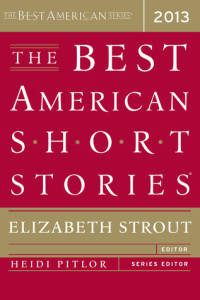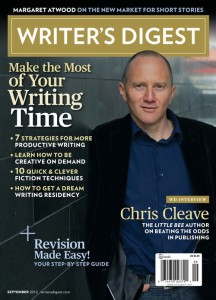Who is the greatest writer of all time?
Is he/she/they alive today?
Has anyone even heard of him/her/them?
I believe Mark Twain posed a question similar to this in a story that I cannot seem to locate. Locked in a chest in an attic somewhere is the greatest work of literature the world has ever seen. It just hasn’t been seen yet. Paradoxically, can it even be considered great if no one has yet to acknowledge it as such?
When we rank authors, we tend to measure them by their technical prowess, their capacity for storytelling, their stylistic singularity, their innovations and their legacy. If this is so, can the greatest writer of all time be unknown? What of the authors who were cast aside in their lifetimes, only to be praised and worshiped after death?
At some point, an author with aspirations-with ambition-must be prepared to share their work with the world. How does a writer choose what work to share and when? Whom should you share it with?
What’s the point?
When I began feeling the urge to write, I had no end goal in mind whatsoever. As a kid, I loved playing RPG’s. I appreciated games that had complex story lines and characters who changed over time. My earliest writing efforts were attempts to replicate the feelings of discovery and control I got from video games. I also had–and continue to have–profound responses to words and the general arrangement of letters. Vocabulary and spelling were my favorite topics in school. I have since learned that this is not normal. I was striving to write lyrical stories full of “flowery” language and delicately shaded descriptors that I hoped would evoke the same feelings in the reader.
Then I started setting actual goals. At first I was content to write once or twice a week. Eventually, my goal became to write every day, but I had to work up to it. I had some vague notions like one day publishing a novel, or having a long list of short story publication credits. Generally though, I have learned to keep my goals short-term and attainable. Aiming for mainstream publication (as opposed to self-publishing) is a long-term goal. I don’t think it happens over night for most people, though I could be wrong.
[NOTE: I know nothing about self-publishing]
What continues to keep me going through the dead ends and inevitable rejections are the goals I set for myself that I am in full control of: the number of words I write every day, the number of books I read, the number of submissions and queries I send out. Putting your fate squarely in the hands of another is, I believe, a recipe for disillusionment.
Shots in the Dark
In the summer of 2014, I finally felt like submitting my stories for mainstream publication. I was a teacher then, and with the whole summer off, I was committed to improving my craft. I had shown my work to a few close friends and family members, and the feedback I received had given me confidence. This sense of the inherent worthiness of my work got me started, but it wasn’t enough to get me published.
I took stock of my meager resources. I started by scanning the back of my copy of Best American Short Stories 2013. I poured over the list of fiction markets until I had a short list of journals that I thought might be good fits for the works in my portfolio. I had around five completed stories at this point. Looking back, I don’t know what criteria I used in selecting these journals, which included the Mid-American Review and the Boston Review, two rather venerable and well-known markets. I sent along my two flash fiction pieces, thinking that their length would increase their chances of getting picked up. I learned later that the market for flash fiction is just as competitive than the short story market, if not more so.
I made two submissions. Before I heard back from the second, I knew I had given myself a false start by taking the completely wrong tack.
Getting Informed
It did not take long to realize the many things I had done wrong. During a trip to Barnes and Noble, I picked up copies of American Short Fiction, Creative Nonfiction, Carve, and Writer’s Digest. The stories in the first three journals were phenomenal. I wouldn’t admit to myself then that they were “better” than my stories, they just had something that mine were missing. They were sharp, emotionally stirring pieces that I found surprising and somehow comforting. The authors had given thought to what they wanted to reader to come away with. Carve magazine was especially informative, because they provide extensive author interviews after each story. I realized that there was no way I would be able to answer those questions about my own work. I had been writing from the heart, but I needed to think more with my head to create stories that editors would want in their publications. Writer’s Digest is affordable, but you really have to be discerning in the advice they present. Remember, their covers sell their magazines, so don’t expect any miracles. The “Standout Markets” feature is usually work a look.
At this point, I was employing four strategies that I hoped would provide a crash course in devising compelling stories that would lead to publication:
1. Read all the literary journals I could get my hands on
2. Read the submission guidelines to online and print markets to get a feel for what they publish
3. Read author and editor interviews
4. Write. Every. Day.
A Better Approach
Instead of just taking random shots and journals that “looked good,” I learned to take stock of my writing and find publications that I knew would be a good fit for a particular story. And the distinctions between journals does not stop with the genre vs. literary mainstream divide. Many newer, independent journals are committed to publishing in specific niches. Here are a few I have come across:
Stories related to nature/the outdoors: The Adirondack Review, Flyway
Experimental stories: DIAGRAM
Dark/Gritty: Jersey Devil Press
Anatomy/Cross-cultural/visual arts: The Bleeding Lion
I could go on and on and on. The point is, know what you are writing, and know what journals publish works like yours.
Lastly, I will talk about quantity. Many people are of the mindset that the more journals you submit to, the more likely you are to get published. Throughout the month of April, I sent in a little over 30 submissions. I received about 10 rejections before my first acceptance. Obviously it doesn’t work like this for everyone. I have heard of some people sending in a story to one journal and having it accepted there. I have also heard of stories getting rejected over 200 times before getting picked up. I like to think that a balanced, informed, strategic approach to submitting yields the best results. I did not submit willy-nilly, but I was also not so choosy in the markets I submitted to. At the end of the day, if your goal is to get published, you will do whatever it takes.
For my next post, I will discuss when I feel my work is ready to submit, and the pitfalls I ran into of submitting too early and and waiting too long.
Part 4: Time to Submit is here!




